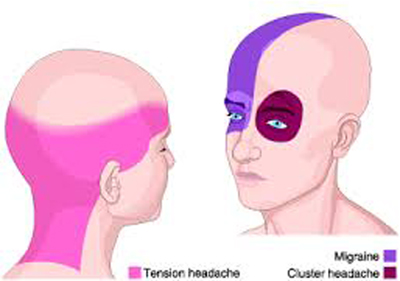Dose-Response and Efficacy of Spinal Manipulation for Care of Cervicogenic Headache:
A Dual-Center Randomized Controlled Trial
SOURCE: Spine J. 2018 (Oct); 18 (10): 1741–1754
Mitchell Haas, DC, MAa, Gert Bronfort, DC, PhD, Roni Evans, DC, PhD, Craig Schulz, DC, MSa, Darcy Vavrek, ND, MS, Leslie Takaki, MA, Linda Hanson, DC, MS, Brent Leininger, DC, MS, Moni B. Neradilek, MS
Integrative Health & Wellbeing Research Program,
Earl E. Bakken Center for Spirituality & Healing,
University of Minnesota,
420 Delaware Street SE,
Minneapolis, MN, USA, 55455.

BACKGROUND CONTEXT: The optimal number of visits for the care of cervicogenic headache (CGH) with spinal manipulative therapy (SMT) is unknown.
PURPOSE: To identify the dose-response relationship between visits for SMT and chronic CGH outcomes; to evaluate the efficacy of SMT by comparison with a light massage control.
STUDY DESIGN/SETTING: Two-site, open-label randomized controlled trial.
PATIENT SAMPLE: Participants were 256 adults with chronic CGH.
OUTCOME MEASURES: The primary outcome was days with CGH in the prior 4 weeks evaluated at the 12- and 24-week primary endpoints. Secondary outcomes included CGH days at remaining endpoints, pain intensity, disability, perceived improvement, medication use, and patient satisfaction.
METHODS: Participants were randomized to 4 dose levels of chiropractic SMT: 0, 6, 12, or 18 sessions. They were treated 3 times per week for 6 weeks and received a focused light-massage control at sessions when SMT was not assigned. Linear dose effects and comparisons to the no-manipulation control group were evaluated at 6, 12, 24, 39, and 52 weeks. This study was funded by the National Center for Complementary and Integrative Health (R01AT006330) and is registered at ClinicalTrials.gov (NCT01530321). The authors declare no conflicts of interest.
RESULTS: A linear dose-response was observed for all follow-ups, a reduction of approximately 1 CGH day/4 weeks per additional 6 SMT visits (p<.05); a maximal effective dose could not be determined. CGH days/4 weeks were reduced from about 16 to 8 for the highest and most effective dose of 18 SMT visits. Mean differences in CGH days/4 weeks between 18 SMT visits and control were -3.3 (p=.004) and -2.9 (p=.017) at the primary endpoints, and similar in magnitude at the remaining endpoints (p<.05). Differences between other SMT doses and control were smaller in magnitude (p > .05). CGH intensity showed no important improvement nor differed by dose. Other secondary outcomes were generally supportive of the primary.
There are more articles like this @ our:
CONCLUSION: There was a linear dose-response relationship between SMT visits and days with CGH. For the highest and most effective dose of 18 SMT visits, CGH days were reduced by half, and about 3 more days per month than for the light-massage control.
KEYWORDS: Cervicogenic headache; Chiropractic; Dose-response; Massage; Randomized controlled trial; Spinal manipulative therapy
From the FULL TEXT Article:
Introduction
Headaches are a substantial public health and financial burden on society [1] with over half of the global population experiencing headaches during their lifetimes. [2] Approximately 157 million days of work are lost each year in the US, costing $50 billion in work absenteeism and medical benefits annually. [3] Cervicogenic headache (CGH) is defined as a secondary headache related to a neck disorder. [4, 5] The point prevalence ranges from 0.4 to 4.6% [6–8] and is found in up to 18% of the chronic headache population. [8]
Many US adults use complementary and integrative health therapies for headache and neck pain [10, 11], with spinal manipulative therapy (SMT) among the most common. [12] A growing body literature supports use of SMT for headache including CGH; there has been no other intervention shown to be superior. [13–16] However, there remains little consensus on the appropriate dose of SMT to achieve maximum clinical benefit for CGH. [17]
Our group conducted the first pilot randomized trials evaluating the important yet understudied issue of dose-response of SMT. [17, 18] These studies had promising clinically important results favoring higher numbers of SMT visits to a chiropractor for short-term pain and disability improvement. We therefore conducted the first full-scale dose-response trial for the purpose of identifying optimal care of CGH with SMT and informing the design of future comparative effectiveness studies. The key hypothesis was that there is a linear relationship between the number of SMT visits and clinical outcomes. Intimately related is an efficacy hypothesis: SMT at selected dose levels is superior to a hands-on control. The trial evaluated the unique effects of SMT compared to a brief light massage which controlled for contextual effects related to the provider-patient interaction. [19]
Read the rest of this Full Text article now!



Leave A Comment